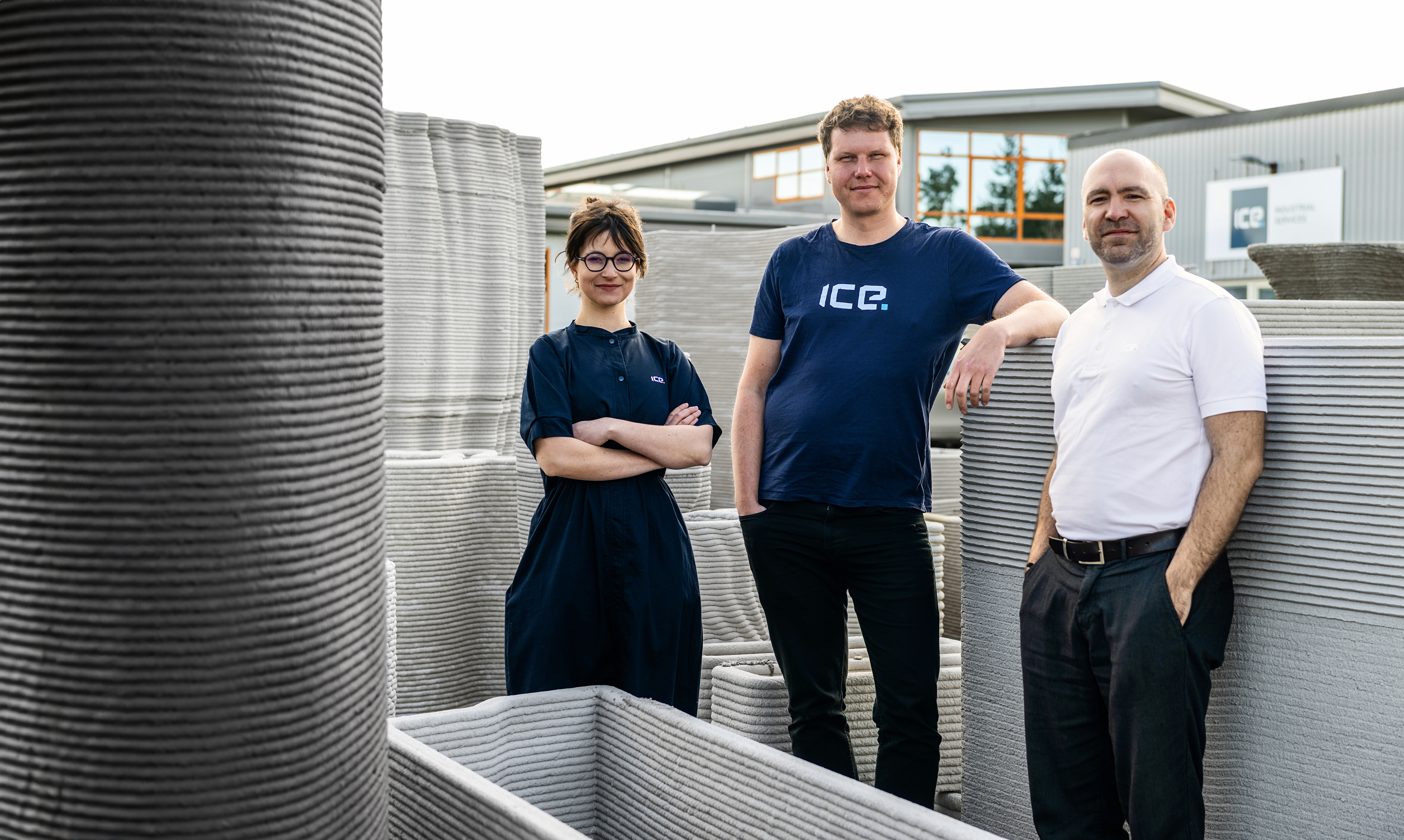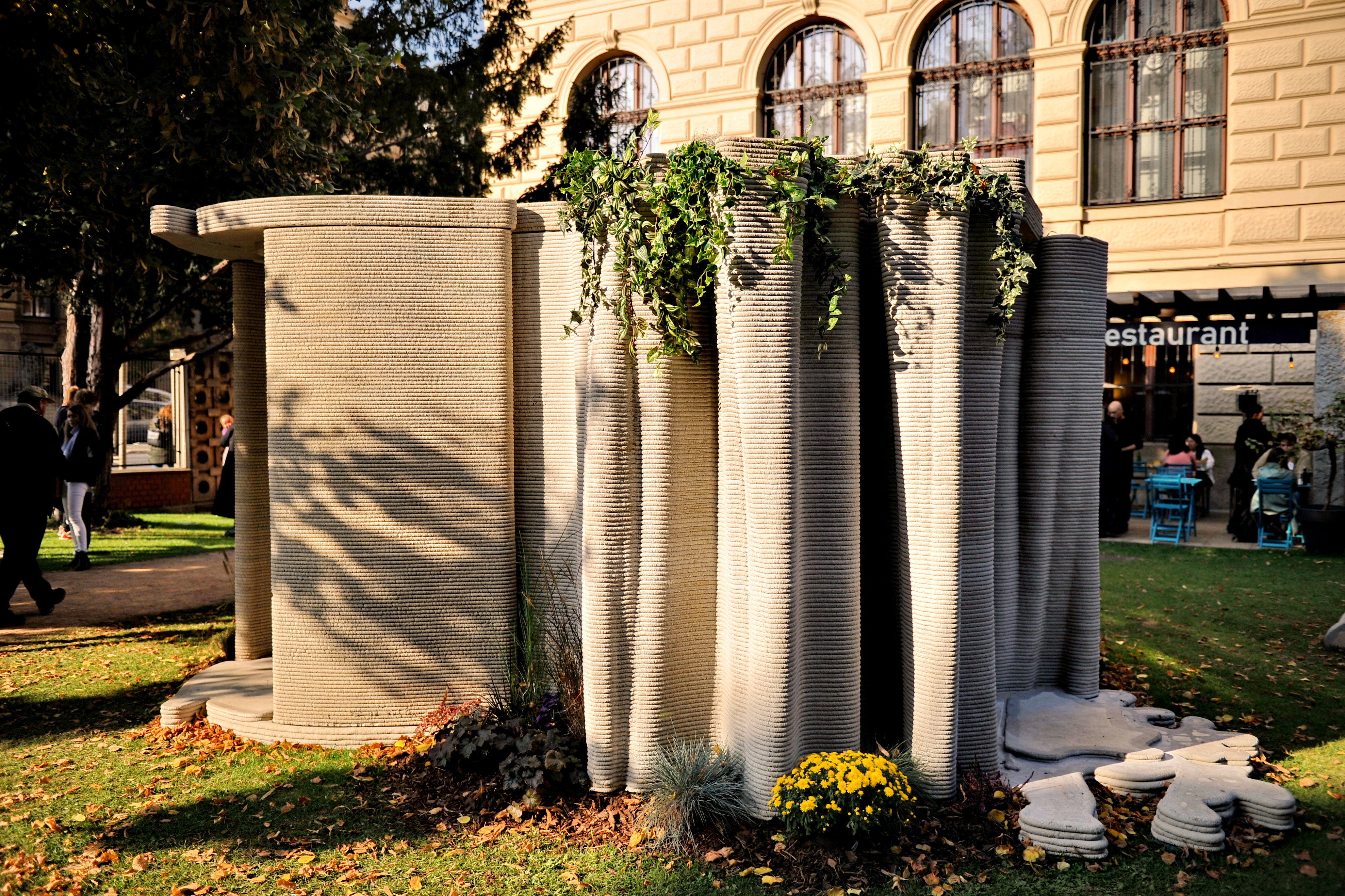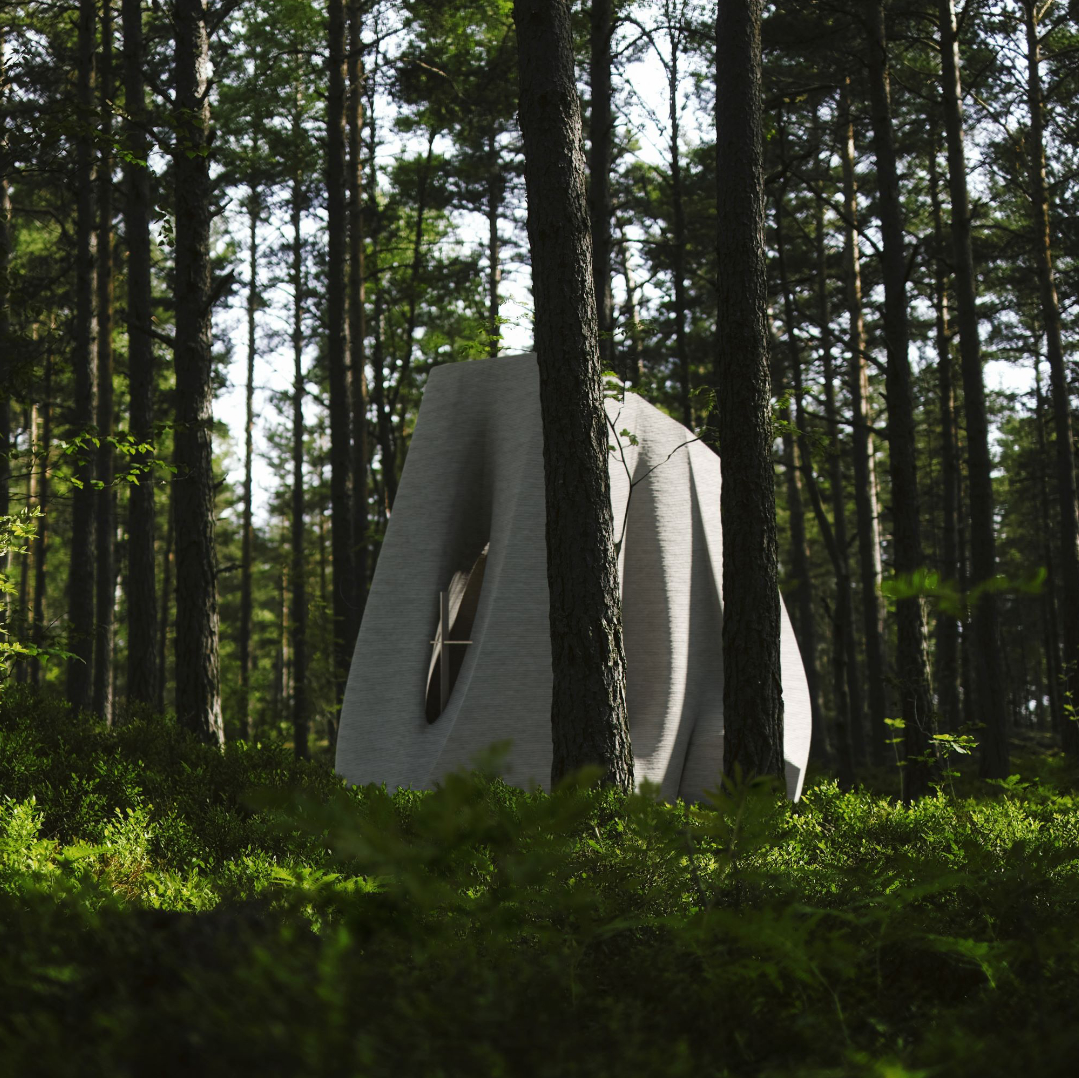We use cookies on our website.
Some of them are necessary for the functioning of the site, but you can decide about others.
In 2022, two significant moments took place. Artificial intelligence entered the lives of architects, serving as inspiration through images and the launch of the chatbot ChatGPT. Furthermore, 3D printing is also becoming established in the field of construction implementation. It's fantastic that ICE is involved in both of these events.

Team ICE Architects: Jiří Uran Vítek, Michal Mačuda, Kristýna Uhrová, Vojtěch Langr, Simona Gašincová
The team of architects at ICE Architects & Constructions prides itself on using parametric models, and recently, we have been dedicated to integrating AI into the design process. We had the opportunity to present our research on AI in architecture and its applications in urban planning and design at the European Congress of Architects in Brussels.
Our approach involves proposing solutions for various contexts and offering a range of options from which clients can choose based on their preferences. 3D printing of concrete not only enables savings in labor, materials, and time on construction sites but also opens up new possibilities. From the on-site printing methodology, which we tested in the off-grid house project, we explored the concept of a "construction factory" where part of the construction element production occurs in a controlled "offsite" environment. Once matured, the modules are distributed to the construction site, where elements are assembled, and finishing works take place. We successfully demonstrated this efficient process in the "Between Conflict" project, exhibited at the international Designblok 2022 showcase in the garden of the Museum of Decorative Arts in Prague (UMPRUM).

Pavilion “Between Conflicts” Designblok Prague 2022
The structure is based on the modular element system called Modesty (Modular Defense System), which we designed for Ukraine. Simultaneously, we conceived it to be applicable to defensive constructions such as checkpoints, lightweight bunkers, barriers, urban shelters, etc. The ICE delegation, led by our CEO Tomáš Vránek, introduced this system directly in Ukraine.
The versatility of the panels, designed to withstand even a caliber of 14.6 mm and meeting the STANAG A5 standard, highlights the advantages of 3D printing, its adaptability, and the speed of the manufacturing process. Additionally, we contextualized and modified the structure as an artistic work. Basic Modesty elements were complemented by highly articulated walls with a wavy structure, connecting the building with the surrounding space of the UMPRUM garden. These wavy walls responded to a nearby fountain, and we adorned floors and ceilings with patterns.
As part of the development of structures and elements, we also created security furniture that can help redefine the public space in our cities. Besides serving as urban furniture, it fulfills aesthetic and safety functions. Furniture doesn't have to be just a passive element but can also be a functional part of the city, such as a bench designed for electric vehicle charging, which we presented in collaboration with IONTtech at the E-Salon.
The significant advancement in architecture was marked by the design of the Chapel of Reconciliation, which interprets the works of Jan Blažej Santini and brings his concepts into the 21st century. What was hard to imagine for Baroque builders is now achievable thanks to digital design methods and 3D concrete printing (3DCP), allowing for material and time savings.

Chapel of Reconciliation, vizualizace: Flying Architecture
We have identified the development of affordable modular homes as another significant theme, aiming for a system that can be easily configured like "Lego." Such a system allows for great variability in constructions and their customization. With this system, it will be possible to build structures ranging from basic homes to different size versions, smart neighborhoods utilizing energy synergy, and public amenities such as modular schools, kindergartens, and hospitals.
3D printing of concrete has opened a new chapter for construction and architecture, and it will be fascinating to observe its further development and, most importantly, to be a part of it. Contemporary architecture will face ever-increasing pressures for efficiency, performance, and sustainability.